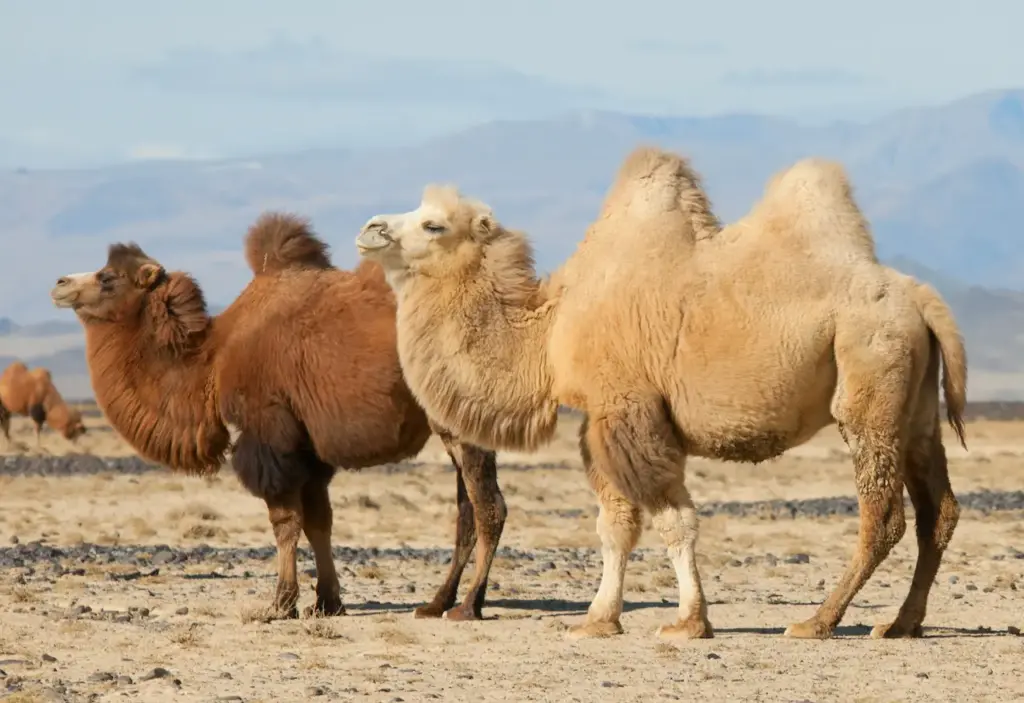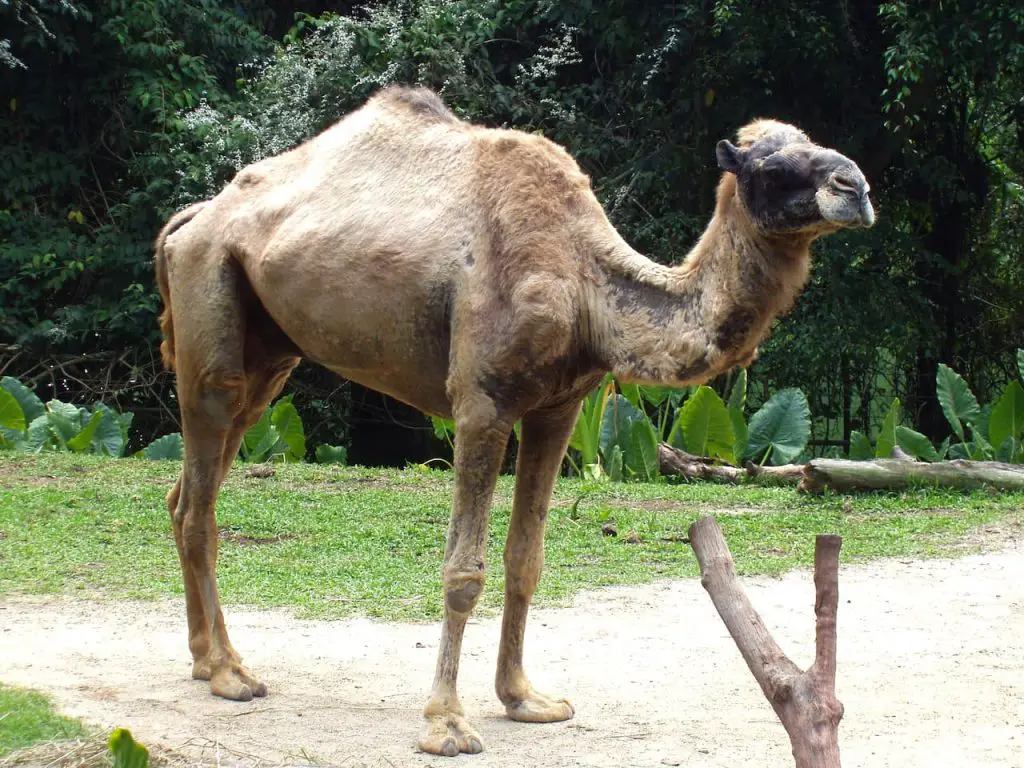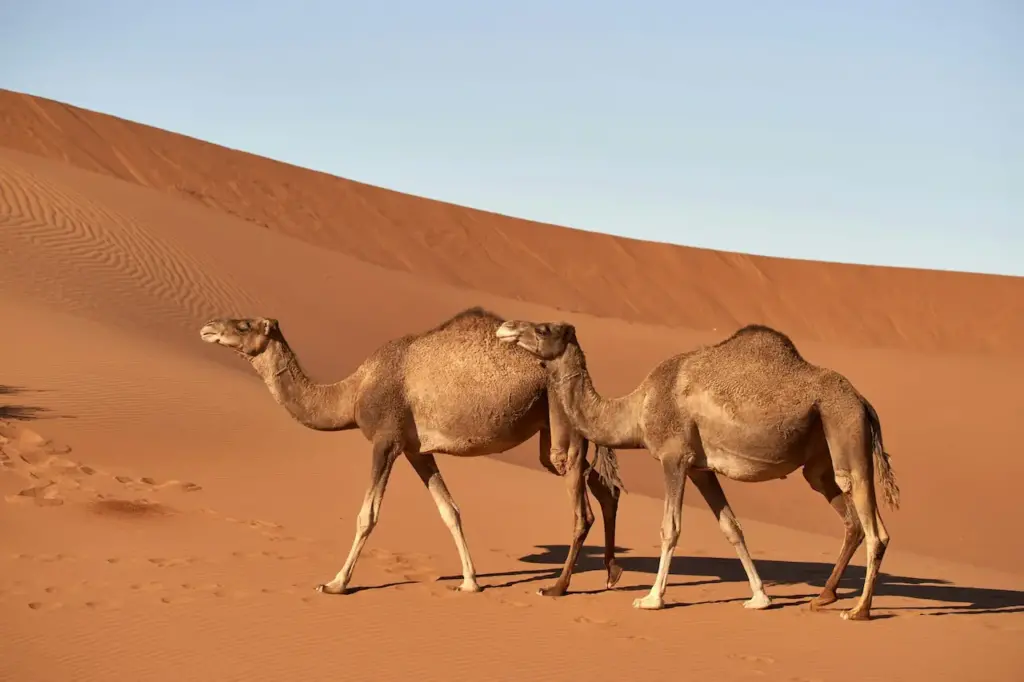What Eats A Camel?
Categories
- Accipitridae (1)
- Acrididae (1)
- Algae (2)
- Alligatoridae (1)
- Amoebidae (1)
- Amphibians (3)
- Anatidae (1)
- Anguillidae (1)
- Arachnids (2)
- Bears (2)
- Big Cats (3)
- Birds (13)
- Bovidae (5)
- Bufonidae (1)
- Camelids (1)
- Cameras (1)
- Canines (13)
- Caridea (1)
- Carnivora (10)
- Castoridae (1)
- Cats (5)
- Cebidae (1)
- Cephalopod (1)
- Cervidae (2)
- Cetacean (1)
- Chondrichthyes (1)
- Crocodilia (2)
- Crustaceans (4)
- Culicidae (1)
- Cyaneidae (1)
- Dasypodidae (1)
- Dasyurids (1)
- Deer (1)
- Delphinidae (1)
- Desktop (1)
- Didelphidae (1)
- Dinosaurs (1)
- Dogs (13)
- Dolphins (2)
- Echinoderms (1)
- Education (10)
- Elephantidae (1)
- Equine (1)
- Erethizontidae (1)
- Erinaceidae (1)
- Farming (1)
- Felidae (5)
- Fish (5)
- Food Chain (31)
- Food Web (2)
- Formicidae (1)
- Frugivore (1)
- Gaming (1)
- Gastropods (1)
- Giraffids (1)
- Great Apes (2)
- Health Conditions (3)
- Herbivore (4)
- Hi-Fi (1)
- Hippopotamidae (1)
- Hominidae (1)
- Insects (10)
- Invertebrates (2)
- Keyboards (1)
- Laptops (1)
- Leporidae (1)
- Mammals (23)
- Marsupials (4)
- Mephitidae (1)
- Microchiroptera (1)
- Mollusks (2)
- Mongoose (1)
- Muridae (1)
- Nocturnal Animals (1)
- Odobenidae (1)
- Omnivore (2)
- Phasianidae (1)
- Phocidae (1)
- Plankton (1)
- Plants (2)
- Primate (1)
- Ranidae (1)
- Reptiles (7)
- Rhinocerotidae (1)
- Rodents (5)
- Salamandridae (1)
- Scarabaeidae (1)
- Sciuridae (2)
- Sharks (1)
- Shellfish (1)
- Sound (1)
- Spheniscidae (1)
- Suidae (1)
- Superfamily Papilionoidea (1)
- Theraphosidae (1)
- What Eats (5)
There are two kinds of camels: Dromedary, or one-humped camels, which are native to Arabia and other parts of the Middle East, and Bactrian, or two-humped camels, which live in Central Asia.
Nothing eats one-humped camels, because while plenty of them live in captivity, they are extinct in the wild throughout their native range.
Around 1,000 wild Bactrian camels still live in the Asian country of Mongolia. The main natural predator that kills and eats these two-humped camels is the wolf. However, wild Bactrian camels are in much more danger from human hunters than they are from wolves.
Table of Contents
Toggle
Two Camel In The Dessert What Eats A Camel
Two-humped camels are in danger of going extinct in the wild because people keep killing them for food.
The camel is an iconic desert mammal well-adapted to thrive in arid environments. However, even these hardy animals have natural predators that feed on them for sustenance.
Understanding what eats camels provides insights into food chains and symbiotic relationships within desert ecosystems.
In the article, we will examine camel adaptations that deter predators, the hunting behaviours of lions, hyenas, snakes, and other deadly hunters, scavengers that benefit from camel remains, and changes that threaten these fragile predator-prey dynamics, revealing the interconnectedness of desert-dwelling species.
Camel Physical Adaptations Against Predation
Camels have several physical traits that help protect them from predators:
Large Size
Larger camels like Bactrian can weigh over 1,000 lbs, making them challenging prey for most predators to take down. Even more, miniature camels are not easy targets due to their substantial bulk.
Speed
Camels can run up to 40 mph in bursts to outrun pursuers when needed. Their long legs and stamina enable swift retreats away from predators.
Powerful Kick
A backward kick from a camel can injure or deter an attacking predator. Camels have thick, strong muscles surrounding their hind legs that propel forceful kicks.
Herding Behavior
Camels gathering in groups and herds provide safety in numbers and easier detection of potential predators. Isolated, lone camels venturing away from the protections of the group are much more vulnerable.
Natural Predators That Feed on Camels
A variety of desert carnivores and hunters have adapted behaviours to prey on camels when opportunities arise:
Large Cats
Lions, cheetahs, and leopards all occasionally attack and feed on camels, especially vulnerable young calves. Lions mainly take down camel calves but may also ambush weaker adults separated from protective herds.
Cheetahs use their speed to pursue and run down camel calves who cannot match their acceleration. Leopards rely on stealth and surprise to hunt camels at night when visibility is low. All three cats preferentially target young calves and weaker older animals rather than healthy adults.

Camel Portrait What Eats A Camel
Other Mammalian Predators
Several mammals like hyenas, jackals, wolves, and bears also prey on camels when feasible. Hyenas may attack in packs to overwhelm young calves or sick adults. Jackals hunt in strategic groups to isolate vulnerable individual camels.
Wolves pursue camels only when desperate, as they are not typical prey. Brown bears seize young camels when range overlap occurs. These predators mainly feed on camelids opportunistically based on availability.
Reptilian Hunters
Some reptiles like crocodiles, large snakes, and monitor lizards are capable camel predators in regions where they co-exist. Crocodiles lay in wait to ambush and attack drinking camels, especially undefended calves, at river crossings and isolated water sources.
Large constricting snakes such as reticulated pythons or anacondas may also occasionally kill and consume smaller camelids like young calves. These instances are very rare but do occur in ranges where the species overlap.
Scavenger Species That Feed on Camels
In addition to predators that actively hunt and kill live camels, many desert scavenging animals will readily feed on camel carcasses and remains:
Hyenas
As proficient scavengers, hyenas make use of most camel carcasses they encounter. Their strong jaws easily crack bones to access the nutritious marrow inside. They also consume considerable soft tissue from carcasses.
Vultures
Vultures play an important role in quickly scavenging and disposing of camel remains. They use their sharp beaks and talons to rip apart musculature and organs and eat the nutritious entrails.
Jackals
Opportunistic jackals scavenge extensively on camel carcasses, feeding on flesh and scraps of hide and skin. They also bury bits of carcass to store as cached food in their dens.
Crows
Crows and other carrion birds pick at camel remains to supplement their diet with bits of flesh clinging to bones and skin. Their sharp beaks allow them to probe small spaces.
Beetles and Ants
Carrion beetles and ants also play a role in dismantling camel remains. Beetles feed on dried flesh, tendons, and other tissue scraps left behind. Ants slowly pick bones clean when all other meat has been consumed.
Prolific scavenging by these species prevents waste and helps recycle nutrients from camels back into the desert ecosystem.
Hunting of Wild Camels by Humans
Humans have long hunted wild camels and continue to play a predatory role where wild camel populations persist. All wild camel species are hunted and killed as a game meat source for human consumption.
Camel meat and milk are dietary staples for many cultures where the animals occur naturally. The meat is often sold commercially as well.
In areas where camels encroach on human settlements, herders may carry out control killings of wild camels perceived as a threat to grazing grasslands and limited water sources needed by domestic livestock.
Legal, regulated hunting of wild camels provides a management tool to control overly abundant populations that can degrade fragile desert habitats and compete with native wildlife. Revenue from permits and tags provides incentives.
Safari tourism promotes highly controlled sport hunting of wild bull camels, largely in Australia’s feral camel populations. This niche industry generates conservation revenue.
Low Rates of Natural Predation on Thriving Camel Populations
Despite the number of predators and scavengers that will consume camel flesh, natural predation rates are relatively low for large, healthy camel populations. Healthy adult camels are immune to predation pressures due to their size and defences. Only old, ill, or otherwise compromised adults become prey.
Most camel predation occurs on vulnerable calves under six months before gaining speed, strength, and size. After maturing, juveniles are relatively safer. Predators prefer other more common and easier desert prey like antelope, rodents, hares, and wildebeest over challenging camels when available.
As a result, natural camel mortality is driven by environmental causes like drought, starvation, and disease, much more than predation in healthy, robust populations. However, depending on circumstances, isolated subgroups and calves may still fall prey.

Two Camel on the Dessert
Camel Anti-Predator Behaviors
In response to predation threats, camel species have developed behavioural strategies to avoid attacks:
Herd Formation
Camels gathering in protective herds, circles, or lines allows them to better detect and defend against predators. Grouping provides safety.
Calf Protection
When threatened, adult camels form a protective perimeter around vulnerable calves near the centre of the group. They may vocalize, spit, stamp, or run at the predator to discourage an attack.
Sleeping and Guarding
Adult camels take turns sleeping and standing guard at night when predators are actively hunting. Having a member of the herd alert and watching for danger provides protection.
Avoiding Ambush Sites
Camels generally avoid areas of low visibility like thick brush where ambush predators like leopards can conceal themselves and have an advantage. Remaining in open areas with good sightlines decreases risk.
Fleeing and Retreating
When camels spot potential threats, they immediately retreat to safety before predators can advance. Adult females isolating to give birth will quickly rejoin the group after delivery. Avoiding risky exposure reduces vulnerability.
These instinctive anti-predator behaviours evolved to maximize camel vigilance, safety, and survival in the presence of natural enemies.
Conclusion
As a vital desert species, the camel fills an important ecological role, providing sustenance for predators and scavengers when natural opportunities arise. However, camels have formidable physical and behavioural adaptations that provide strong defences against all but the largest and most desperate predators.
Limited predation reflects the camel’s success at persisting in harsh desert environments despite predators. Sustainably conserving both robust camel populations and the native carnivore diversity that creates balance within desert ecosystems remains an important long-term goal.
